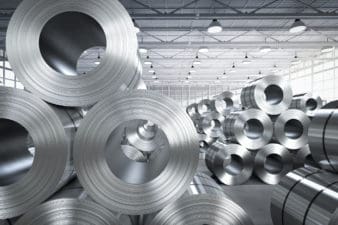Could it be true that the commodities boom that arose because of China’s massive economic growth and urbanization is the last ever in human history?
This extreme forecast is the view of some pundits, including prominent Australian economist Saul Eslake.
If true, it would certainly spell the end of any hope of a rebound among some of Canada’s top mining stocks.
Now what?
China’s insatiable hunger for raw materials over the last decade triggered a mining boom of monumental proportions. At its peak, it caused the prices of commodities such as iron ore, coal, and copper to soar to stratospheric heights, triggering a frenzy of investments among miners as they sought to cash on the “boom that would never end.”
However, over the last year China’s economic growth has not only plateaued, but started to decline.
This in part can be attributed to Beijing’s desire to reign in the excesses of past years as well as China’s transition from being an export-focused economy to one driven by internal consumption. While these are part of the reason for the slowdown, the key driver is that China has reached a point in its developmental journey where rapid industrialization, urbanization, and expansion of the economy has peaked.
This means that future economic growth will never again reach the heady double-digit figures of the past decade that triggered a massive demand for raw materials, but will instead continue at a more sedate rate.
The latest data out of China confirms this.
The construction sector remains in terminal decline, and there is no sign of any uptick in activity in the future because of large housing inventories and slowing rural to urban migration.
Meanwhile, industrial activity for October contracted for its third straight month, primarily because of lower demand for its finished products and excess productive capacity that arose during the boom years.
As a result, China’s third-quarter GDP growth rate dipped to 6.9%, its lowest rate of growth since the global financial crisis.
Miners are now touting the emergence of other developing economies such as Indonesia, Vietnam, and Pakistan as being able to fuel the next commodity boom. This is difficult to see, with each lacking the massive population base and geographic size of China, and these economies are further along the developmental curve than China was when it started to modernize. These factors combined mean that the rate of industrial growth, infrastructure development, and urbanization will be slower and will not last as long.
As a result, the recent lows in commodities such as steel-making coal, copper, zinc, and crude are what I believe to be the “new normal.” Add this with increasing global supplies from miners that have invested heavily in expanding production during the boom years, and these factors do not bode well for any rebound in commodities.
So what?
This means that there is little to no upside in beleaguered coal and base metals miner Teck Resources Ltd. (TSX:TCK.B)(NYSE:TCK). Not only is it battling declining revenues from its core products, but it is burdened with a pile of debt and is obligated to make further expenditures on the increasingly uneconomic Fort Hills oil sands project.
Teck is not the only miner that appears unattractive in such a harsh operating environment, but because of its high debt load and exposure to steel-making coal, copper, zinc, and crude, it is the most vulnerable.





